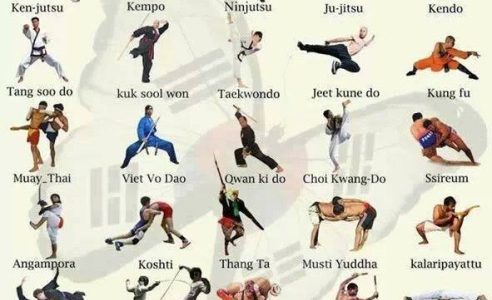The Development And Historic Relevance Of Martial Arts Throughout Different Cultures
The Development And Historic Relevance Of Martial Arts Throughout Different Cultures
Blog Article
Developed By-Winkler Liu
Martial arts have a fascinating history that covers centuries and continents. You might locate it interesting just how old methods like Shuai Jiao and Kalaripayattu laid the groundwork for modern battle techniques. These disciplines not just highlight physical skills but also mirror the societies that birthed them. As you discover their development, consider just how globalization has actually transformed these typical kinds into hybrid styles. What impacts do you assume have formed today's martial arts landscape?
Ancient Martial arts: The Structures of Combat
As you delve into the world of old martial arts, you'll uncover the rich foundations that shaped fight methods throughout cultures. Early practices focused on Self-Defense and survival, frequently including strikes, hurting, and weapons.
In old China, as an example, strategies like Shuai Jiao highlighted throws and joint locks, while India's Kalaripayattu showcased dexterity and liquid activity. boxing and martial arts supplies established Kenjutsu, a polished swordsmanship that highlighted technique and method.
These martial arts offered not just for battle however also as a means of personal advancement, instilling worths like regard and perseverance. The mixing of these techniques gradually prepared for the varied martial arts you see today, each mirroring the special approaches and needs of its society.
The Social Influence on Martial Arts Growth
While martial arts usually reflect the sensible demands of a culture, they also embody the social values and beliefs of their beginnings. When you explore various martial arts, you'll notice just how they're affected by religion, ideology, and social norms.
For example, the focus on respect and technique in Japanese martial arts stems from Zen Buddhism and samurai society. On the other hand, Brazilian Jiu-Jitsu promotes versatility and technique, shaped by the requirement for performance in a varied, modern setting.
You may discover that the rituals, uniforms, and training approaches reflect an area's background and identification. By understanding these social impacts, you deepen your recognition of martial arts and their duty fit human experiences around the world.
Modern Adaptations and the Globalization of Martial arts
Martial arts have transformed substantially in recent years, adjusting to contemporary culture and international influences. You'll notice that standard types have combined with modern strategies, creating hybrid styles like mixed martial arts. These adaptations cater to varied target markets, making martial arts obtainable and attractive around the world.
With the increase of social media and digital platforms, you can locate tutorials and competitions from all corners of the globe, damaging geographical barriers. This globalization has actually led to a common appreciation for numerous disciplines, from Brazilian Jiu-Jitsu to Taekwondo.
As you involve with these arts, you'll realize they're not practically fight; they promote health and fitness, technique, and psychological wellness.
Ultimately, modern-day adaptations have actually improved the martial arts landscape, making it a vibrant and developing practice.
Conclusion
In exploring the history and evolution of martial arts, you reveal a fascinating mix of strategies, cultures, and philosophies. From martial arts to practice at home like Shuai Jiao and Kalaripayattu to the contemporary versatility seen in MMA, martial arts show humankind's quest for Self-Defense and individual growth. As martial arts with kicks engage with these methods, you not just gain abilities however likewise a much deeper appreciation for the varied practices that form our globe today. So, continue your trip and accept the art of combat!
